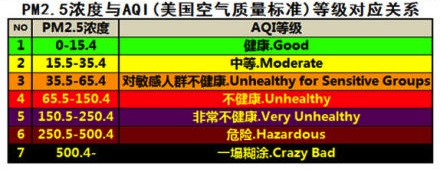
After a year of public demands, Beijing’s municipal government has finally agreed to measure air pollution using the Air Quality Index (AQI), which most pollution-watchers should be familiar with thanks to the US Embassy’s air quality monitor. Reports Global Times:
Beijing is tossing out its hazy Air Pollution Index and replacing it with a new Air Quality Index (AQI). [...]
The Beijing Environmental Protection Bureau’s announcement of the AQI on Saturday did not explain how the new index would be calculated, but noted that when it hit the 200 level (“serious”), safety measures kick in, including warning old people and children to limit outdoor activities. At 300 (“severe”), schools should cancel outdoor exercise. At 500 (“extreme”), all outdoor sporting events should be cancelled, and the government should cut 30 percent of the government vehicles on the road.
Beijing had been using the Air Pollution Index (API), which only measured large-particle that often underrepresented how bad air quality really was, and then an “Ambient Air Quality Index” that still failed to live up to US AQI standards. As researcher Angel Hsu explained in March:
As for the standards on PM 2.5, there is a discrepancy between the U.S. and China AQIs, and the reason is that China has adopted the stage 1 interim recommendations set by the WHO. The U.S., of course, uses a 15 micrograms/m3 guideline.
The push for reliable, non-politicized air pollution data largely came from Beijing residents, particularly those who received the US Embassy’s air quality data through Sina Weibo. As summarized by Harbus:
The notion of PM 2.5 has continued to build momentum on Weibo, and local and federal Chinese officials took notice.
Soon after, the Shanghai Municipal Environment Monitoring Center started to disclose current and historical levels of PM2.5. By early 2012, the State Council passed revised air quality standards which include an index for PM 2.5. PM 2.5 was also included in Prime Minister Wen Jiabao’s 2012 Government Work Report on March 5th based on China Daily. Wen’s report said that China would be “controlling air pollution by monitoring PM2.5 fine particulate matter in major metropolitan areas starting now, and then expanding the monitoring to cities at the prefectural level by 2015.”
So, good news for all? Or just a way for us to understand — more fully and incontrovertibly than before — that we are constantly enshrouded by the equivalent of cigarette smoke and fumes?
That’s OK. The beers and fake booze will kill most of us first, anyway.
UPDATE, 12/18, 7:50 pm: On the subject of pollution, here’s Xinhua:
Construction is to be suspended and use of official vehicles limited in cases where Beijing air quality plummets to “extremely bad,” under a new rule on curbing air pollution.
The rule, to be enacted on Jan. 1, 2013, categorizes air pollution as “bad,” “seriously bad,” and “extremely bad” — depending on a basket of indexes that include measurements of both fine and coarse air particles and ozone levels, meteorological officials announced on Friday.

















































Mutton dressed as lamb.
Unlike what your headline suggests, Beijing has been measuring PM2.5 since October. The news is that they are changing their strange and hard to interpret rating system to one that is more standardized and easier to understand.